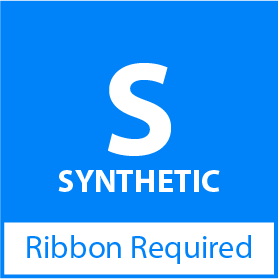Label Buying Guide
Buying labels for the first time can be an intimidating process, but it doesn’t have to be! We’ve listed some key information below, to help you understand our vast range of products.
Materials
Labels can come in a variety of different materials. The most common materials are Direct Thermal, Thermal Transfer, and Synthetic.
|
|
|
|
|
|
When to Use |
When labels are either temporary, or aren’t exposed to harsh environments. |
When labels are permanent, or require more durability than direct thermal labels. |
When high durability labels are needed, such as in environments with exposure to moisture, heat, UV light or cold.
|
|
Common Uses |
|
|
|
|
Longevity |
Short to medium term applications. |
Longer term applications. |
High durability, long term applications. |
|
Printing |
Direct Thermal Printers (No Ribbon Required). Thermal Transfer Printers can also be used for these labels. |
Thermal Transfer Printers (Ribbon Required). |
Thermal Transfer Printers (Ribbon Required) |
Formats and Configurations
The format is the configuration in which your labels are used.
Labels on Rolls
The labels are simply wound around a cylindrical core. This is the most common label format and is often used in conjunction with label printers to print barcodes or designs onto the labels.
Fanfold Labels
Fanfold labels are provided as a stack of labels, folded in a zig-zag-like pattern, with perforations between the labels (so they can be easily separated from the stack). Most printers on our site will support fanfold printing in addition to using rolls.
Perforated Labels
Perforated labels have a line of small holes (perforations) between each label so that they can be easily torn off from the fanfold stack or roll.
Core Sizes
The core size of a roll of labels refers to the diameter of the core in which the labels are wound. We manufacture our labels with 3 different core sizes: 25mm, 38mm, 76mm. This is so that you can choose the correct core size to fit into your printer. 25mm/38mm are common core sizes that will fit most Desktop printers, whereas 76mm is a core size used in Industrial Printers.
Dimensions (Width and Height)
The size of a label refers to its width and height. Its standard convention to refer to the width of the label first, and then the height; a 100x150mm label will have a width of 100mm, and a height of 150mm.
If you are printing onto your labels, you must ensure your printer can print your labels with the correct width. Certain printers will only print up to a maximum width, so you should check that your labels do not exceed this width. If you do not know the maximum label width of a printer on our site, you can view the pdf brochure (by clicking on the pdf icon below the product image) and view the specifications section.
Adhesives
We provide 2 common adhesive types for the labels on our site: Removable, and Permanent.
Removable Adhesive
Removable adhesive should be used for secure yet temporary applications, where the label needs to be removed at some point in the future.
Permanent Adhesive
Permanent adhesive is designed to ensure your labels stick indefinitely and is much more difficult to remove.
Speciality Adhesives
The adhesive you choose will depend on your requirements, and the surfaces in which your labels are being applied. If in doubt, we also manufacture labels with many other specialty adhesives that are not necessarily shown on our site, so if you need something special, just contact us and we’ll develop a custom label solution for your needs.




